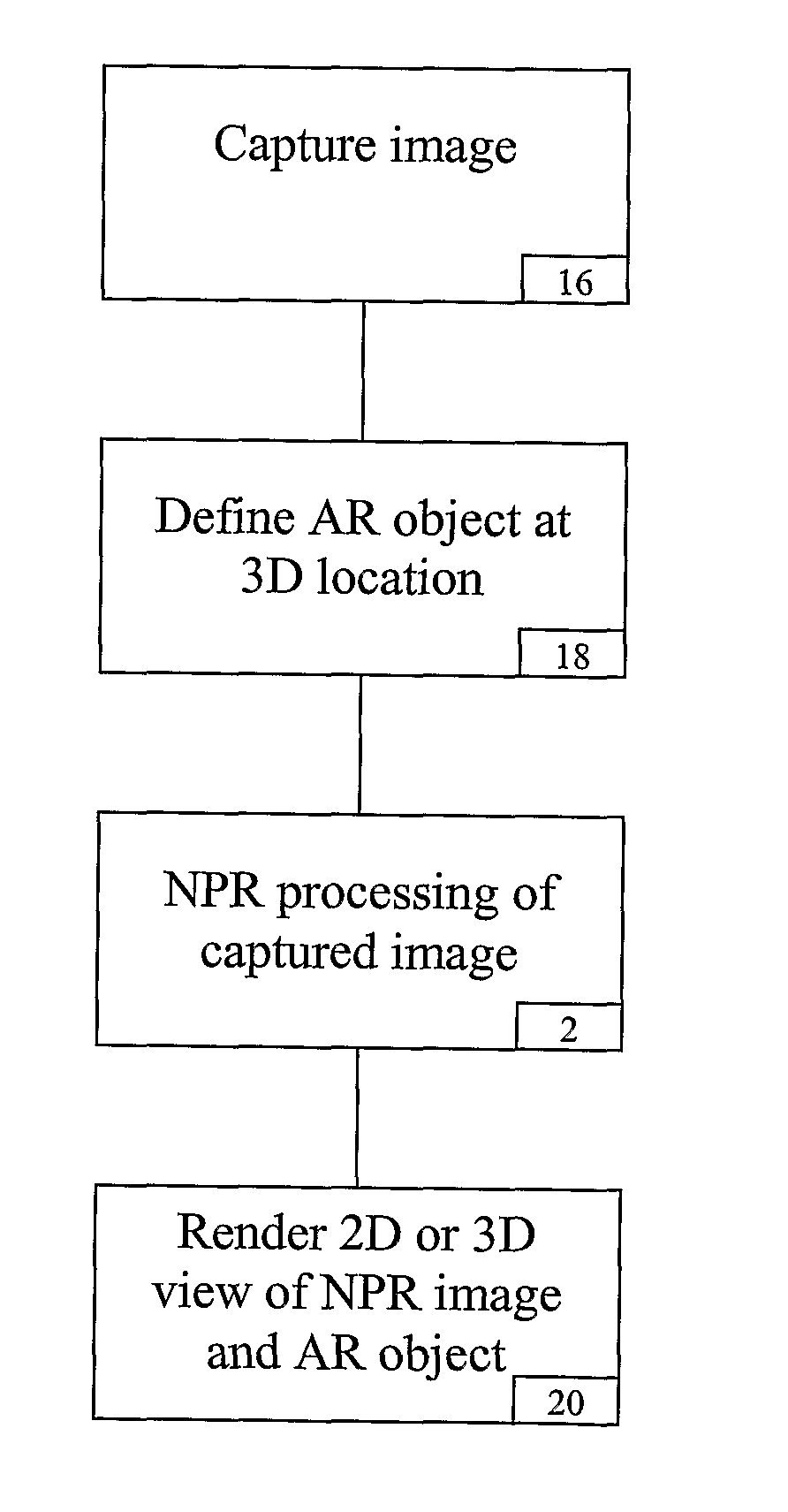Non photorealistic rendering of augmented reality
- Summary
- Abstract
- Description
- Claims
- Application Information
AI Technical Summary
Benefits of technology
Problems solved by technology
Method used
Image
Examples
Embodiment Construction
[0027]The underlying idea for the present method of rendering an image as applied to medical AR displays is to render an exposed anatomical surface as a translucent layer while keeping sufficient details to aid navigation and depth cueing. One embodiment is based on pq-space based Non-Photorealistic Rendering (NPR) for providing a see through vision of the embedded virtual object whilst maintaining salient anatomical details of the exposed anatomical surface. To this end, surface geometry based on a pq-space representation is first derived, where p and q represent the slope of the imaged surface along the x, y axes, respectively. For example, this can be achieved with photometric stereo by introducing multiple lighting conditions. For deforming tissue, however, the problem is ill posed and the introduction of multiple light sources in an endoscopic set-up is not feasible. Nevertheless, the problem can be simplified for cases where both camera and a light source are near to the surfa...
PUM
 Login to View More
Login to View More Abstract
Description
Claims
Application Information
 Login to View More
Login to View More - R&D
- Intellectual Property
- Life Sciences
- Materials
- Tech Scout
- Unparalleled Data Quality
- Higher Quality Content
- 60% Fewer Hallucinations
Browse by: Latest US Patents, China's latest patents, Technical Efficacy Thesaurus, Application Domain, Technology Topic, Popular Technical Reports.
© 2025 PatSnap. All rights reserved.Legal|Privacy policy|Modern Slavery Act Transparency Statement|Sitemap|About US| Contact US: help@patsnap.com



